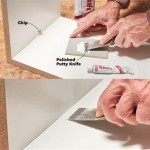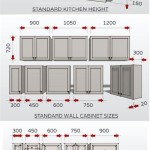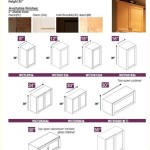Installing Molding on Kitchen Cabinets: A Step-by-Step Guide
Molding is an elegant and functional addition to kitchen cabinets, enhancing their appearance and providing useful benefits. Installing molding on kitchen cabinets is a rewarding project that can transform the look of your kitchen and add value to your home.
In this guide, we'll walk you through the essential steps of installing molding on kitchen cabinets, providing detailed instructions and tips to ensure a professional finish.
Materials Required:
- Cabinet molding
- Measuring tape
- Miter saw
- Sandpaper
- Wood glue
- Brad nailer
- Brad nails
Step 1: Measure and Cut the Molding
Using a measuring tape, determine the length required for each piece of molding. Cut the molding using a miter saw to create a 45-degree angle at each end. Ensure the angles are accurate for a clean and professional joint.
Step 2: Sand the Edges
Lightly sand the edges of the cut molding to remove any splinters or rough edges. This will ensure a smooth and finished appearance.
Step 3: Apply Wood Glue
Apply a thin layer of wood glue along the inside edge of the molding where it will attach to the cabinet frame. Ensure the glue is evenly distributed.
Step 4: Attach the Molding
Position the molding on the cabinet frame and secure it in place using brad nails. Insert the brads at an angle, approximately 1 inch apart, to prevent splitting the wood. Use a brad nailer for precise and secure fastening.
Step 5: Miter the Corners
When installing molding around corners, you will need to miter the ends to create a seamless joint. To do this, cut two pieces of molding at a 45-degree angle and fit them together at the corner. Secure the mitered joint with wood glue and brad nails.
Step 6: Fill Nail Holes
Once the molding is installed, fill any nail holes with wood filler. Allow the filler to dry completely and then sand it smooth to match the surrounding surface.
Tips:
- Use a sharp blade in your miter saw to ensure clean cuts.
- Dry-fit the molding before gluing and nailing to check for proper alignment.
- Pre-drill small pilot holes in the molding before inserting the brad nails to prevent splitting.
- Use a variety of molding profiles to create a unique and personalized look.
Conclusion:
Installing molding on kitchen cabinets is a straightforward project that can enhance the aesthetics and functionality of your kitchen. By following the steps outlined above, you can achieve a professional-looking finish that will add value and beauty to your home for years to come.

Adding Crown Molding To Cabinets Young House Love

How To Install Kitchen Cabinet Crown Molding Family Handyman

Installing Kitchen Cabinet Crown Molding

Installing Crown Molding On Kitchen Cabinets

Installing Crown Molding On Kitchen Cabinets Diy Cabinet

Installing Crown Molding On Kitchen Cabinets Diy Cabinet

Crown Installation On Kitchen Cabinets Issue Moulding Molding Cabinet

How To Install Crown Molding On Your Cabinets Construction Repair Wonderhowto

The Easiest Way To Install Crown Molding On Cabinets

Diy Kitchen Cabinet Upgrade With Paint And Crown Molding
Related Posts








